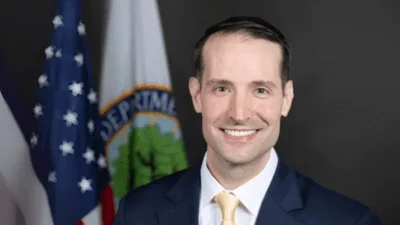Robert Cutchins, an Army veteran, was saved from a potential life-threatening medical emergency thanks to the vigilance of his Remote Patient Monitoring-Home Telehealth Care Coordinator, Kristin Moser. Moser quickly recognized a change in Cutchins' vital signs while using the RPM-HT services provided by the VA, leading to prompt action and ultimately saving his life.
According to Denis Mcdonough, the patients using RPM-HT submit their health checks daily, which include vital signs and answers to questions based on their diagnosis. This allows the care team to monitor their health and make informed decisions about their care.
Veterans with long-term or risky medical issues can remotely communicate vital health information to their VA care team using RPM-HT. They can send and receive measurements for their blood pressure, blood sugar, heart rate, and other vital signs through telehealth technology. Based on these measurements, the care team can suggest next steps and determine whether in-person care is required. Moser, as the RPM-HT care coordinator, plays a crucial role in keeping track of patient data and working with Veterans to schedule appointments, modify treatments, and ensure their overall well-being. In Cutchins' case, he receives care through the Oscar G. Johnson VA in Iron Mountain, Michigan.
One of the challenges faced by Veterans residing in rural communities and northern Wisconsin is the lengthy commute required to obtain VA care in person. To overcome this, Moser regularly examines Cutchins' vital sign readings to provide him with high-quality care. In May, Moser noticed an increased blood pressure reading on Cutchins' daily health check and observed signals of a potentially serious medical condition. She immediately phoned Cutchins and urged him to go to the emergency department. She also provided him with the phone number for the nurse triage line in case of an emergency.
Over the course of the weekend, Cutchins' symptoms worsened, leading Moser to schedule an appointment with his primary care physician. Lab tests revealed that his symptoms were heart-related, prompting his transfer to St. Mary's Hospital Medical Center in Green Bay, Wisconsin. Emergency surgery was performed, during which six stents were implanted in his heart's arteries. According to the doctor, Cutchins' heart was 90% obstructed, and without the timely intervention, he would not have had much time to live.
This case highlights the importance of home-based remote patient monitoring and the role of dedicated care coordinators like Kristin Moser in saving lives. The RPM-HT technology allows veterans to receive timely care and intervention, especially for those residing in remote areas. Moser's vigilance and quick response in recognizing the signs of a medical emergency exemplify the dedication and commitment of healthcare professionals in providing the best possible care for veterans.









